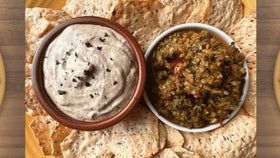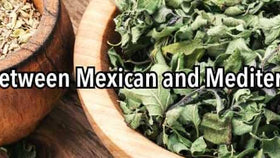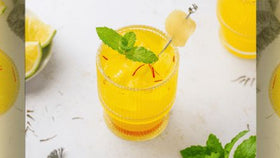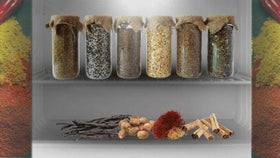Understanding Vanilla, its History, Cultivation, and Top Growing Regions
Vanilla, with its alluring aroma and delightful flavor, has captivated the senses and palates of people around the world for centuries. This humble bean, derived from the vanilla orchid, has a rich history and a fascinating journey spanning continents and cultures. From its ancient roots in Mesoamerica to its modern-day cultivation in various tropical regions, vanilla has become an indispensable ingredient in culinary, cosmetic, and fragrance industries. In this article, we will delve into the history and cultivation of vanilla beans, explore the top growing areas worldwide, and discover the top five uses that have made vanilla a beloved and coveted commodity.
The Origin of Vanilla Beans
Where did vanilla beans originate?
Vanilla beans originated in Mesoamerica, particularly in present-day Mexico. The indigenous Totonac people were the first to cultivate vanilla, cherishing its distinctive aroma and flavor. They believed that the vanilla orchid had mystical properties and considered it a precious gift from the gods.When was it discovered that vanilla bean could be cultivated and pollinated outside of Mexico?
The true discovery of vanilla beans, as we know them today, can be attributed to the 19th century. In 1841, on the French island of Réunion (formerly known as Bourbon Island), a young slave named Edmond Albius made a groundbreaking contribution to vanilla cultivation. At the age of 12, he discovered a method of hand-pollinating vanilla orchids, as the natural pollinators, such as specific species of bees native to Mexico, were not present in other regions where vanilla was introduced. This hand-pollination technique was crucial to the successful production of vanilla beans outside of Mexico and led to the widespread cultivation of the orchid.Cultivation of Vanilla Beans:
Vanilla bean cultivation is a labor-intensive and delicate process. The vanilla orchid requires a specific tropical climate, with warm temperatures, high humidity, and adequate rainfall. It also thrives in well-drained, rich, and loamy soil. Although vanilla orchids can grow as vines on trees in their natural habitat, in commercial cultivation, they are usually trained to grow on trellises or other support structures for easy maintenance and harvesting.The vanilla orchid flowers are hermaphroditic, meaning each flower contains both male and female reproductive organs. However, they have a unique mechanism for pollination. In regions outside of Mexico, where natural pollinators are unavailable, human intervention is necessary to pollinate the flowers. Cultivators carefully remove the membrane that separates the male and female parts of the flower, gently press them together and secure them to ensure fertilization.
After pollination, the vanilla beans begin to develop, growing from small green pods into the familiar dark brown, slender beans once fully cured. The cultivation process requires patience and expertise, as it can take several months for the beans to fully mature. Once harvested, the beans undergo a meticulous curing and drying process to bring out their rich, complex flavors and aromas.
Top growing areas of vanilla beans worldwide:
Madagascar
Undoubtedly the largest and most significant producer of vanilla beans in the world, Madagascar accounts for over 80% of the global vanilla market. The Sava region, particularly towns like Antalaha and Sambava, is the heart of vanilla cultivation in Madagascar. The bourbon vanilla variety (Vanilla planifolia) dominates Madagascar's production, and its unique flavor profile makes it highly sought after by chefs and connoisseurs.
Get your Madagascar vanilla beans here.
Uganda
In recent years, Uganda has emerged as a major player in the vanilla industry. The favorable tropical climate in certain regions of Uganda, such as the districts of Mbarara and Masaka, has encouraged farmers to adopt vanilla cultivation. Ugandan vanilla beans are known for their bold and fruity flavors, adding a distinctive touch to various culinary creations.
Grab best-in-class Vanilla beans from Uganda here.
Tahiti
The South Pacific islands, particularly Tahiti, are renowned for their production of Vanilla tahitensis, also known as Tahitian vanilla. This variety is distinct from Bourbon vanilla, offering a more delicate and floral flavor profile with fruity undertones. Tahitian vanilla is often used in high-end gourmet desserts and is a favorite among pastry chefs and chocolatiers.
Find fragrant Tahitian vanilla beans in our vanilla shop.
Indonesia
Indonesia, with its diverse tropical climate, is another significant contributor to the world's vanilla supply. The islands of Java, Sumatra, and Bali are prominent regions for vanilla cultivation. Vanilla planifolia is the primary variety grown in Indonesia, and its beans boast a balanced flavor profile with creamy and floral notes.
Shop our gourmet vanilla beans from Indonesia.
Mexico
As the birthplace of vanilla, Mexico retains its historical significance in vanilla production. The states of Veracruz and Oaxaca continue to be major vanilla-growing regions. Mexican vanilla beans have a rich and bold flavor, and they hold a special place in the culinary traditions of the country.
Discover top-quality Mexican vanilla beans in our online spice shop.
Top Five Uses of Vanilla Beans
1. Vanilla Extract
Vanilla extract is one of the most common and widely used vanilla products. It is made by steeping vanilla beans in alcohol and water, allowing the flavors and aromas to infuse into the liquid. The resulting extract is a concentrated form of vanilla essence, used to enhance the flavor of various baked goods, desserts, and beverages.
2. Fragrance
The sweet and alluring scent of vanilla has made it a popular choice in the fragrance industry. Vanilla is a keynote in many perfumes and colognes, adding warmth and depth to floral and oriental fragrances. Its comforting aroma is often used in scented candles and room sprays to create a soothing atmosphere.
3. Culinary Delights
Vanilla beans are prized by chefs and home cooks alike for their ability to elevate a wide range of culinary creations. From classic vanilla custards, ice creams, and puddings to savory dishes that benefit from a hint of sweetness and depth, vanilla beans are versatile ingredients in the kitchen.
4. Health and Wellness
Vanilla has been used in traditional medicine for its potential health benefits. It is believed to have antioxidant properties and may help reduce stress and anxiety. Some studies suggest that vanilla can aid in digestion and promote relaxation.
5. Cosmetics and Skincare
The soothing properties of vanilla make it a popular ingredient in cosmetics and skincare products. Vanilla is often used in body lotions, creams, and scrubs for its calming effect on the skin. Its pleasant scent is also used in perfumed body sprays and bath products.










Slofoodgroup
Author